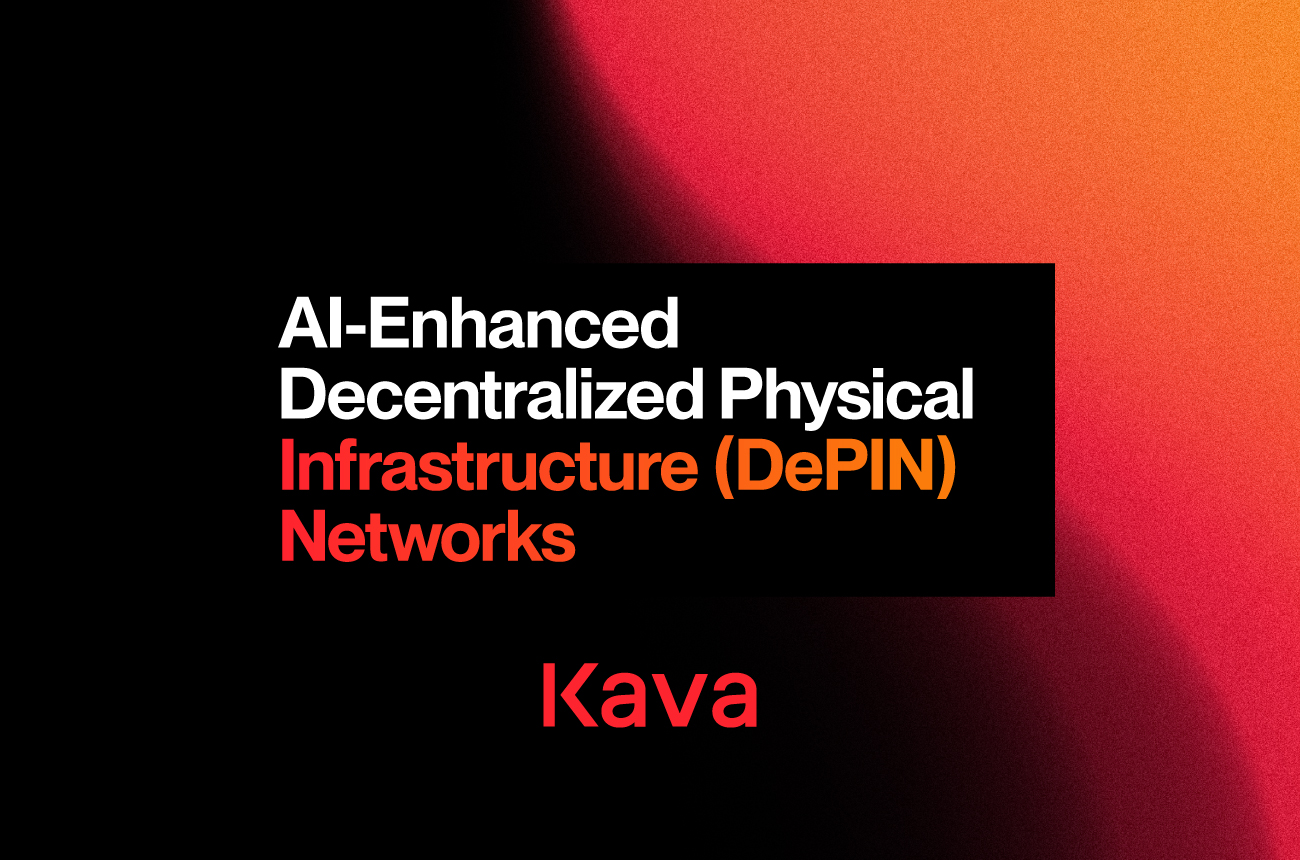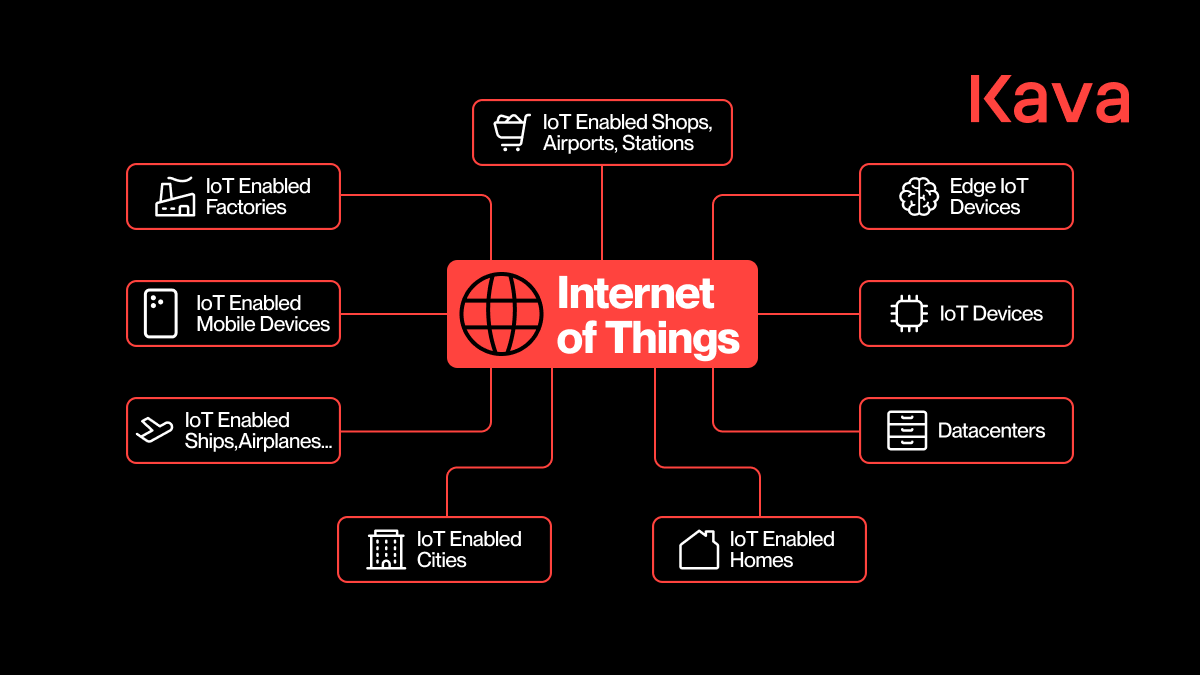AI-Enhanced Decentralized Physical Infrastructure (DePIN) Networks

The convergence of IoT and blockchain technology was one of the most innovative developments after the advent of smart contracts. Smart contracts enable the application of transactional law, and when combined with the inherent immutability of blockchain technology, they help facilitate the sharing of critical infrastructure resources across decentralized networks.
Before, we explored the role that AI plays in advanced blockchain reasoning, including the decision-making process behind smart contracts. We also examined how AI-enhanced IoT networks can serve as a constant source of high-quality data for developers to tap when creating dynamic and decentralized physical infrastructure marketplaces, as discussed in our article on smart cities. Now, we turn our attention to how these self-adjusting AI-powered DePIN networks are laying the groundwork for the future of critical resource sharing in industries ranging from data storage and raw computing power to energy production and cellular networks.
This article begins by exploring some DePIN fundamentals, including how these innovative networks operate with their incentive mechanisms and the impact that AI is having on the space. Then, let’s delve into the specific ways that AI is enhancing DePIN infrastructure through demand prediction, resource allocation, tokenized incentives, and the integration of real-world assets (RWAs). Finally, we will cover the use cases of the Helium Network and Filecoin to see how established DePIN projects are integrating AI before offering a prediction on the future of this dynamic space.
DePIN Fundamentals
DePIN infrastructure, at its core, is a layered network for resource sharing that creates a virtuous, self-reinforcing cycle. The cycle creates sustainable growth and adoption through continued use. DePIN networks typically follow the same path to sustainability across verticals:
- Token incentives to drive initial participation
- Infrastructure deployment
- Improved coverage attracts real demand
- Revenue generation sustains tokenomics
- Proven utility attracts more demand
Blockchain token offerings encourage initial participation by providing an incentive for establishing the network. After the network is deployed, users begin to adopt it. The more people that adopt it, the more fees are generated for those running the network, creating additional incentives for its continued maintenance. As the network scales, it becomes more legitimized by strengthening its resilience and offerings. This expansion creates more competition between nodes running the network, which lowers network fees for the end-user while simultaneously increasing overall demand. This virtuous loop allows DePIN networks to become self-sustaining over time.
Imagine a decentralized cell phone provider that offers high-speed Wi-Fi service to customers in exchange for tokens. The more people who participate in running the network, the stronger it becomes. The stronger the network becomes, the wider its range and the higher the quality it can offer. The increased coverage creates competition among those running the network, ultimately driving down the price of the service, which in turn attracts more users to the network.

IoT Integration
The Internet of Things (IoT) is a network of smart devices and physical objects embedded with sensors and software that is becoming increasingly interconnected. It encompasses everything from mobile phones and edge computing to physical sensors, robotics, and data centers. IoT is providing the backbone for the quality data intake required for the training and development of ML devices. For use in DePIN infrastructure, IoT provides an essential role by operating effectively as a network of high-quality continuous Oracles.

Machine Learning Optimization of DePIN Networks
The combination of IoT and blockchain technology has already established a strong foothold in challenging the status quo of legacy, centralized providers. In contrast to the centralized data centers and cellular providers that could artificially choke supply and limit access to competitors, DePIN has been offering cheaper, faster, and more robust networks of physical infrastructure. If we examine DePIN projects, such as Helium and io.net, which are challenging legacy Wi-Fi and GPU compute providers by offering up to 70% cost savings to customers. DePIN is already well-positioned to disrupt the legacy infrastructure.
The integration of AI and machine learning optimization is helping to accelerate DePIN innovation by creating hyper-efficient self-regulating autonomous networks. Machine learning algorithms enable these networks to become self-optimized through demand prediction, resource allocation, predictive maintenance, and tokenized incentivization. It is because of AI’s ability to analyze and incorporate massive amounts of new information in real-time that AI-enhanced DePIN networks are poised for a breakthrough. Combined with the immutable quality of data production that decentralized IoT devices provide, DePIN networks have a massive competitive advantage over their centralized competitors.
Demand Prediction
By leveraging the continuous flow of information from IoT devices, DePIN networks can more efficiently predict future demand and proactively identify gaps in coverage. DePIN networks can then allocate resources more effectively, predict peak usage periods, scale automatically, and redistribute capacity where it is needed most.
Dynamic Resource Allocation
The introduction of machine learning AI algorithms in DePIN has enabled these networks to respond dynamically to fluctuations in demand. Traditional physical infrastructure operates largely on inefficient and static demand scales based on maintaining maximum load demand thresholds at all times. DePIN networks can create reactive response mechanisms that better allocate resources in real-time, resulting in more efficient models that reduce the overall network costs.
Bitcoin’s proof-of-work consensus mechanism has proven particularly effective at this by integrating into local energy grids. For example, utilizing unused power when it is not needed and scaling back when local demand spikes during peak or unpredictable periods, like extreme heat or cold snaps.

Predictive Maintenance
One of the most advantageous uses of AI integration in DePIN networks is its ability to identify and resolve ongoing maintenance issues within the infrastructure itself. Machine learning capabilities, informed by data from IoT devices, can continuously monitor infrastructure health, predict failure points, and coordinate maintenance activities without requiring human intervention. This automated, proactive approach to machine maintenance significantly reduces downtime, improves the overall lifespan of the infrastructure, and lowers the maintenance costs while also creating a more predictable and consistent quality of service.
Tokenized Incentivization
A unique advantage that DePIN has over centralized competitors is its ability to incentivize individuals to expand the network through dynamic tokenization. AI can identify gaps in coverage that it can automatically fill by creating market incentives.
Imagine a decentralized cellular provider with limited coverage in certain regions. AI could geolocate these areas and offer increased network rewards for running nodes in these locations. This opportunity encourages the continued expansion of the network, creating a more robust service that is readily available, even in low-coverage areas that legacy providers have historically neglected due to the high initial start-up costs of developing infrastructure.
Kava’s RWA Integration
Interoperable DeFI platforms like Kava are uniquely positioned to help support this next wave of DePIN innovation through the blending of traditional finance and decentralized infrastructure with real-world assets (RWAs). Physical infrastructure assets can be tokenized and managed through AI-driven protocols that optimize ownership structures, revenue distribution, and maintenance funding.
The ERC-1155 standard can further enhance RWA's utility by enabling them to be minted as dynamic NFTs on special-purpose vehicles (SPVs). The RWA's features can be continually updated without compromising the provenance of ownership. This dynamic updating capability is particularly valuable for infrastructure assets whose performance and value change in response to AI optimization improvements.
The integration of AI analytics with RWA tokenization could also enable sophisticated investment products that are automatically reflected in infrastructure performance, predictive maintenance schedules, and optimized improvements in token value and yield distributions. This opens the doors to new financial instruments that combine the stability of physical infrastructure with the efficiency gains from AI optimization.
DePIN Case Studies
The concept of leveraging blockchain technology for sharing more than just financial transactions across decentralized networks dates back to before the advent of smart contracts. Although the term DePIN is relatively new, both Helium and Filecoin were able to correctly identify blockchain networks and tokenization as a way to create a decentralized market for shared physical infrastructure.
Helium Network
The Helium Network was originally founded in 2013 with the sole aim of creating a global decentralized wireless network to support the emerging IoT industry. In May 2023, Helium Mobile’s beta went live, offering an unlimited talk, text, and data phone plan for $25 per month. In July 2023, Discovery Mapping went live, allowing Mobile Network users to earn MOBILE token rewards by opting in to serve as a Discovery Mapper, sharing their location data through a connected smartphone. Building on these successes, Helium introduced its no-contact offering in December 2023 and expanded its mobile hotspot service to Mexico in March 2024 through a partnership with telecommunications company Telefónica.
The network has since incorporated its own AI coverage planner tool to help hotspot deployers identify optimal locations for their devices. The AI-powered tool analyzes multiple variables, including terrain data, existing coverage patterns, population density, and usage predictions to recommend optimal hotspot placement locations. Helium’s AI modeling also dynamically analyzes the network to identify new areas that can provide the most value for subscribers, boosting the network rewards in those regions.

Filecoin
Similar to the Helium Network, Filecoin predates the invention of smart contracts but its impact has been no less important. Filecoin is a preeminent example of AI-enhanced decentralized storage management. Within Filecoin, machine learning algorithms optimize data placement, retrieval efficiency, and storage provider selection across a global network of nodes. Since the mainnet launch in 2020, the network has grown to nearly 3,000 storage providers (SPs), collectively storing 1.5 exbibytes of data.
The Filecoin Virtual Machine (FVM) enables the execution of smart contracts and programmable storage on the network. This has significantly improved Filecoin's utility for both DePIN and AI applications by creating more sophisticated data handling and processing directly on the storage layer. The FVM’s ability to create programmable storage capability allows AI algorithms to make intelligent decisions about data placement based on access patterns, geographic distribution, and the reliability of the storage provider. This enhances the overall efficiency of the network, reduces operating costs, and enables the storage of additional data within the same amount of space.
The Future of AI-Enhanced DePIN Networks
DePIN networks were already challenging the tightly controlled grip of centralized providers in data storage, Wi-Fi, cellular coverage, energy production, and cloud computing. The addition of AI machine learning models in DePIN has only deepened this divide and accelerated DePIN's innovation towards producing an even larger paradigm shift toward intelligent, self-optimizing infrastructure. The continued growth and successes of the Helium Network and Filecoin are clear demonstrations of this shift.
The future belongs to infrastructure networks that can autonomously optimize their operations, predict and prevent failures, and adapt to changing demands without human intervention. As AI capabilities continue to advance and blockchain infrastructure matures, we anticipate increasingly sophisticated DePIN networks that deliver essential services more efficiently, reliably, and cost-effectively than traditional centralized alternatives.
